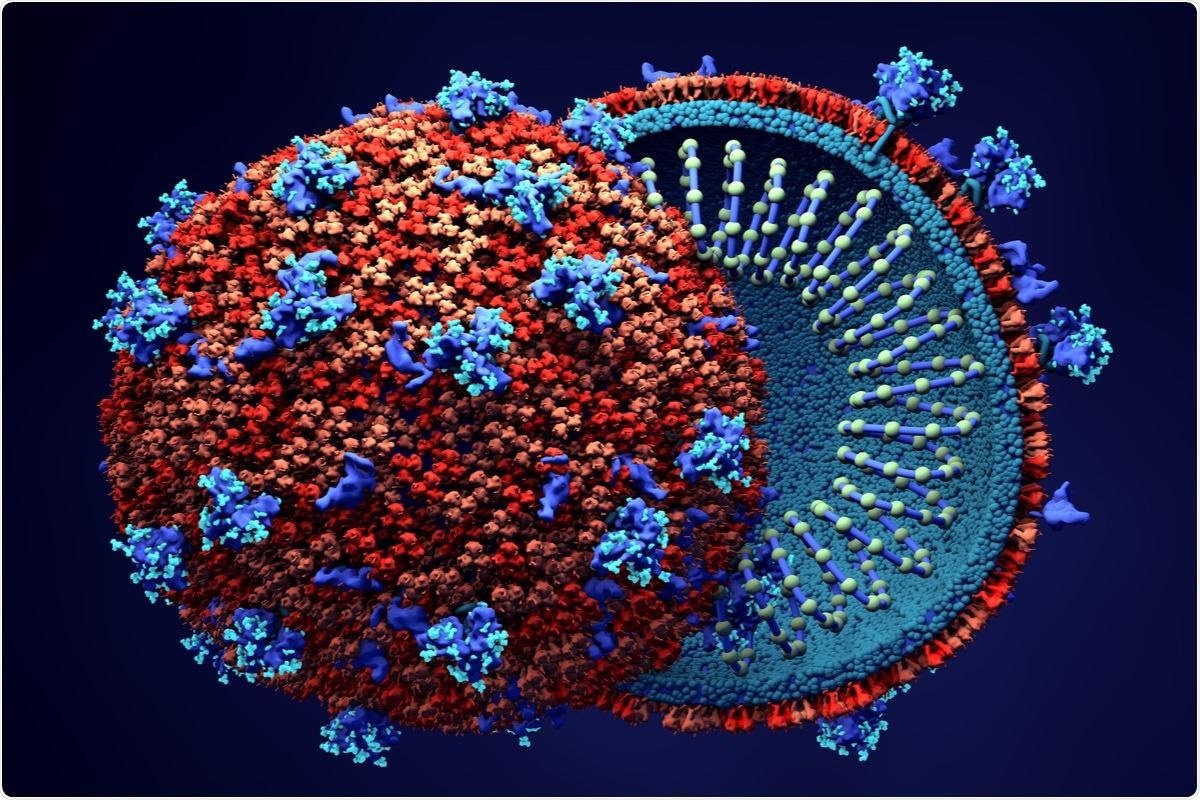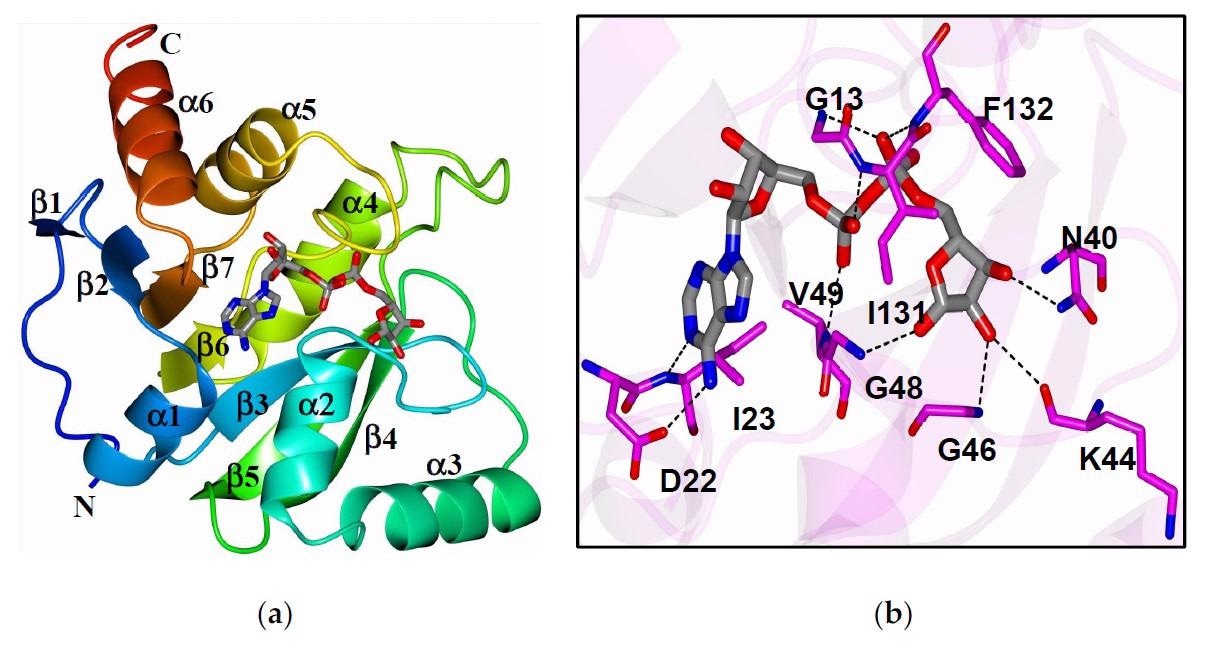Macrodomains represent a unique target for pathogens with pandemic potential

Scientists have long stated that the emergence and re-emergence of infectious viral diseases, such as severe acute respiratory syndrome coronavirus 2 (SARS-CoV-2), human immunodeficiency virus (HIV), Zika virus, chikungunya virus (CHIKV), etc., pose a huge threat to humanity in terms of health and economy. Both pharmaceutical and non-pharmaceutical preventive measures are required to protect individuals from these viruses.

Study: The Conserved Macrodomain Is a Potential Therapeutic Target for Coronaviruses and Alphaviruses. Image Credit: Design_Cells / Shutterstock
Background
The current coronavirus disease 2019 (COVID-19) pandemic, caused by SARS-CoV-2, has highlighted the gap in preparedness to protect individuals against sudden viral outbreaks. This is mainly due to the lack in the development of antiviral agents against viruses that have the potential to cause pandemics.
Three coronaviruses, namely, severe acute respiratory syndrome coronavirus (SARS-CoV), Middle East respiratory syndrome coronavirus (MERS-CoV), and SARS-CoV-2, have caused notable epidemics, claiming millions of lives.
Another class of virus, i.e., mosquito-borne alphaviruses, has the potential to cause a pandemic. Many individuals are affected with arthritis-causing alphaviruses, such as CHIKV, Sindbis virus (SINV), and Mayaro virus (MAYV). These viruses cause chronic joint pains. Often, viral RNA of both alphaviruses and coronaviruses persist, causing ongoing immune stimulation and prolonging symptoms.
Scientists have highlighted an urgent need for effective antiviral treatments for alphaviruses and coronaviruses. This would reduce hospitalizations, deaths, and long-term disability due to viral infections.
A New Study
Previous studies have reported that both alphaviruses and coronaviruses contain a highly conserved macrodomain, which could serve as a potential target for developing antiviral drugs. Furthermore, they reported that this newly identified macrodomain is essential for viral replication and virulence.
In a new study published in the journal Pathogens, researchers have summarized the role of the macrodomain in viral replication and virulence and further reviewed the development of macrodomain inhibitors as antiviral agents.
A macrodomain is a conserved protein fold that exists as a single protein or embedded within a larger protein. Previous studies have shown that the macrodomain structure comprises a three-layered α/β/α fold and a conserved ADP-ribose binding pocket.
Prior studies have indicated that mutations in the ADP-ribose binding regions of coronaviruses, alphaviruses, and HEV macrodomains cause inhibition in replication. In alphaviruses, the macrodomain mutation inhibits the initiation of infection and viral RNA synthesis. Similarly, studies using mice models have shown that mutations in the macrodomain domain of the SARS-CoV genome inhibit viral replication. These studies imply that macrodomain ADP-ribosylhydrolase activity is essential for both coronavirus and alphavirus pathogenesis. The prime function of the macrodomain is associated with the virulence of viruses. The coronavirus macrodomain is also linked with repression of the interferon (IFN) response during infection. Researchers have reported that macrodomain mutant viral infection triggers IFN induction in the very early stages of infection. Therefore, macrodomain inhibitors could restore hosts’ robust IFN response as well as viral replication.
Several ADP-ribosyltransferases (PARPs) that, typically, transfer an ADP-ribose moiety from NAD+ onto target proteins get activated by IFN and viral infection. PARPs are identified to be IFN-stimulated genes that are conserved across vertebrates as part of the innate response to infection.

(a) The structure of SARS-CoV-2 macrodomain complexed with ADP-ribose (6WOJ); (b) hydrogen bonds (dashed lines) between amino acids in the binding pocket and ADP-ribose. Obtained from Alhammad et al., 2020.
Several studies have documented the importance of some PARPs in host antiviral responses. These studies have reported that overexpression of PARPs restricts the replication of several classes of RNA viruses. For example, PARP11 and PARP12 cause inhibition of Zika virus replication through ADP-ribosylating non-structural proteins, which target them for degradation.
Recent genomic analyses of SARS-CoV-2 sequences, especially all sequences of variants of concern, revealed that critical residues for binding ADP-ribose remained highly conserved. This highly conserved sequence could be used as a potential target to design antiviral agents that could be effective across different virus families.
One of the advantages of choosing the macrodomain as a drug target is that over 500 structures are already available in the Protein Data Bank. Additionally, among these 500 sequences, 314 belong to viruses and 130 to humans. Structural analysis of SARS-CoV-2 macrodomains has shown the presence of three defined druggable “pockets” near the active site. These sites are regarded as potential targets for small molecule inhibitors. ADP-ribose binds to the largest pocket (P1), whereas the neighboring P2 and P3 could be further explored for structure-based drug discovery.
Several approaches, such as computational docking, fragment-based screens, thermal shift assays, and crystallographic screening, have independently determined several compounds, e.g., remdesivir, that binds to the SARS-CoV-2 macrodomain.
Conclusion
Previous studies have revealed that the macrodomain is highly conserved, in all coronaviruses that include seven human coronaviruses, and is critical for ADP-ribosylhydrolase activity. The authors stated that the development of effective macrodomain inhibitors could play an essential role in preventing major viral outbreaks. They further noted that identification of selective inhibitors based on ADP-ribosylhydrolase activity could be performed by screening more extensive libraries. This improves the chances of determining effective macrodomain inhibitors. In addition, since coronaviruses and alphaviruses are veterinary pathogens, the discovery of macrodomain inhibitors could also play an important role in the treatment of infected animals.
- Leung, L.K.A. et al. (2022) The Conserved Macrodomain Is a Potential Therapeutic Target for Coronaviruses and Alphaviruses. Pathogens. 11(1). 94. https://doi.org/10.3390/pathogens11010094, https://www.mdpi.com/2076-0817/11/1/94
Posted in: Medical Research News | Disease/Infection News
Tags: Arthritis, Chikungunya, Chronic, Coronavirus, Coronavirus Disease COVID-19, covid-19, Disability, Drug Discovery, Drugs, Genes, Genome, Genomic, HIV, Immunodeficiency, Interferon, MERS-CoV, Molecule, Mosquito, Mutation, Pandemic, Protein, Remdesivir, Respiratory, RNA, SARS, SARS-CoV-2, Severe Acute Respiratory, Severe Acute Respiratory Syndrome, Syndrome, Veterinary, Virus, Zika Virus

Written by
Dr. Priyom Bose
Priyom holds a Ph.D. in Plant Biology and Biotechnology from the University of Madras, India. She is an active researcher and an experienced science writer. Priyom has also co-authored several original research articles that have been published in reputed peer-reviewed journals. She is also an avid reader and an amateur photographer.
Source: Read Full Article